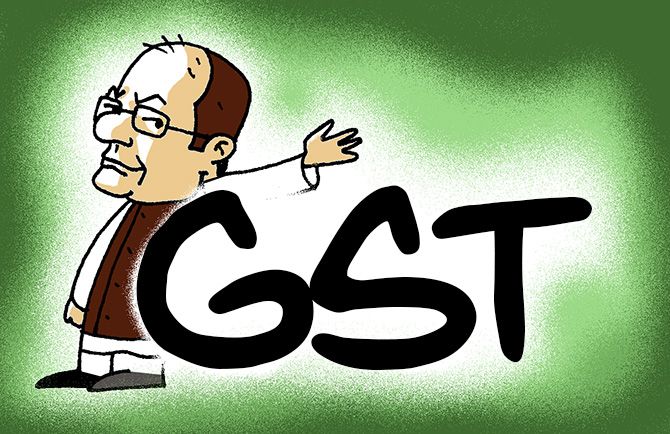'So far, the government has sanctioned more than Rs 300 billion as GST refunds,' Ansh Bhargava and Aditya Singhania point out.

The Goods and Services Tax was introduced on July 1, 2017 and we are approaching the completion of the first year of the tax.
The initiative has raised the confidence of both domestic and international players in the Indian market.
The taxpayers' expectations from GST, the government's efforts in laying the foundation of the GST law, its implementation by the GST Network (GSTN), the role of the implementing officers, and tax practitioners' compliance with the law will be topics of debate and stakeholders are bound to have a variety of different opinions.
Remarkably, when we take a comparative look at the experience of various countries, India has not been under any inflationary pressure compared to other countries that implemented GST, whether you judge by Wholesale Price Index (WPI) or Consumer Price Index (CPI).
India's performance in the World Bank's Ease of Doing Business rankings has also improved.
Undoubtedly, since the GST law is an altogether new law which has eliminated many existing indirect taxes, it is taking its own time to overcome teething problems.
The initial hiccups in the digital implementation of the tax also led to taxpayers taking a jaundiced view of the tax. But GST will emerge as the most seminal indirect tax reform ever implemented in India.
It is also pertinent to note that the GST Council has always been pro-active, and in order to address each practical deficiency as it arose, it made changes in the GST law in almost every one of its 27 meetings.
So far, we have witnessed the phase of registration and filing of returns. Taxpayers will also face the stage of assessment and scrutiny.
GST refunds have become an area of concern for almost all classes of taxpayers, but mainly for exporters.
The entire process of GST registration and returns has been successfully running online on www.gst.gov.in.
The process, ranging from registration, returns and refunds, to assessment and e-waybill, is available on the digital portal, and there is no manual interruption.
However, in the case of refunds, there is a hybrid process wherein the taxpayer has to first file an application online, and then get it processed manually by carrying the requisite documents.
There are several types of refunds in GST -- namely, refunds on account of excess payment of tax due to mistakes; excess balance in electronic cash ledgers; exports with payment of IGST or under bond or letters of undertaking (LUT); supplies made to units/developers in special economic zones on payment of IGST or under bond or LUT; inverted duty structure; deemed exports; persons holding UIN and miscellaneous refunds.
The prime reasons why refunds have been delayed are technical mistakes made by taxpayers in filing returns such as GSTR 3B or GSTR 1; mistakes made by exporters in furnishing details in shipping bills; lack of clarity in the procedure for filing the refund form; uncertainty about online filing versus manual filing; uncertainty about which officer to interact with; and validations placed on the GST common portal, and so on.
The problem gets compounded when numerous clarifications, notifications, press releases, forms and documents are issued.
Looking at the difficulty, the Central Board of Indirect Taxes and Customs (or CBIC, earlier known as the Central Board of Excise and Customs) has from time to time made efforts to release refunds by organising various drives.
Refunds of GST have been a concern for both the government and the trade for the past several months.
So far, the government has sanctioned more than Rs 300 billion as GST refunds.
In order to liquidate the pending amount of around Rs 140 billion, the government started a second 'special refund fortnight' that started on May 31 and went on until June 14, 2018.
The first refund drive was only for refunds on account of exports.
The second drive will facilitate all types of refund claims, with customs, central and state GST officers endeavouring to clear all GST refund applications received on or before April 30, 2018.
The drive is a mega opportunity for India's taxpayers to secure the release of refunds that have been pending since July 2017.
To educate taxpayers about GST refunds, the government has also published a ready reckoner that explains each type of refund in lucid language, with a clear mention of the time limit, relevant dates, documents required, procedures to claim refunds for exports, tabular presentations of various situations along with solutions, with screenshots of the GST Portal for each type of refund.
The ready reckoner is for all taxpayers, tax practitioners, chartered accountants, company secretaries, lawyers and GST practitioners.
Ansh Bhargava is Director, and Aditya Singhania is Deputy General Manager, Taxmann.
Illustration: Dominic Xavier/Rediff.com











